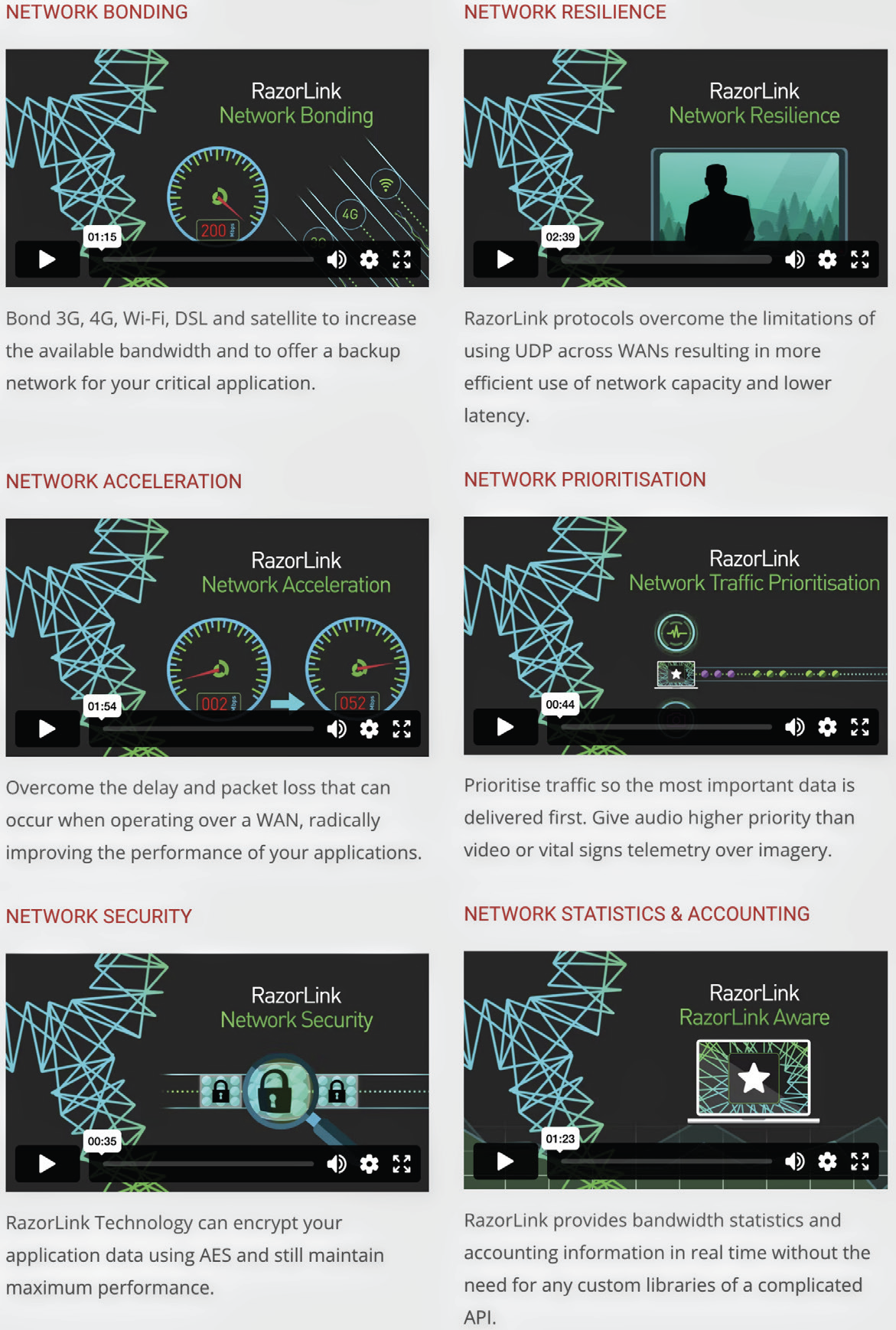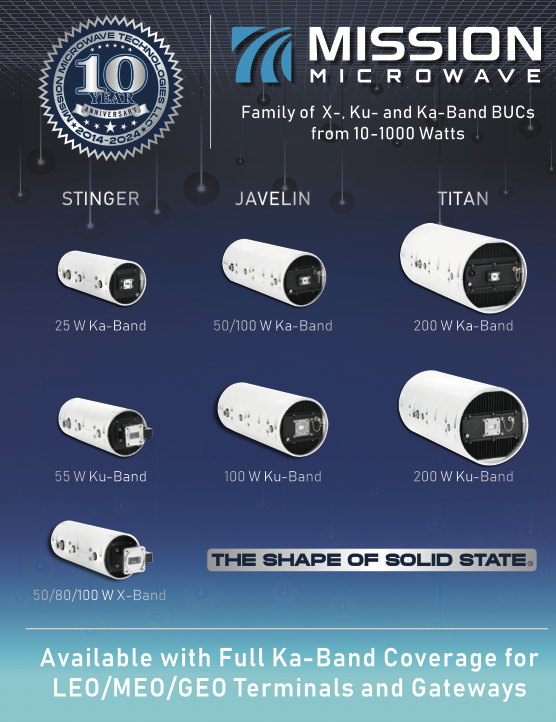There is much discussion among telecommunications companies about the automation journey of networks, and rightly so, as artificial intelligence (AI), machine learning (ML) and pressure on carriers to increase margins from connectivity whilst protecting prices, are proving powerful agents for change in their market.

However, there’s one other development that is not receiving enough attention and that’s the impact of hybrid connectivity — the bonding of networks — and this could prove to be the biggest disrupter of all in the maritime sector (in fact, in most others, as well.)
A PwC industry survey last year cited nearly half of the telecom CEOs polled worldwide predicted existential threats unless their companies adapted to the changing market. Additionally, add in that other B2B operators are rapidly moving into the connectivity space and it becomes easy to see why the battle for revenue could get nasty.
At present, the dominant broadband communications in maritime remains satellite, and yet the cost of airtime has always been an important consideration for the user. This is where true hybrid comes in, the ability to bond multiple networks and route traffic via the most effective network.
Enter Inmarsat’s newly launched NexusWave, a “unified, multi—dimensional network, delivering high—speed service, unlimited data, and global coverage at sea – all through a single provider.” This combines the traditional GEO satellite connectivity with more cost—effective and efficient services, such as Low Earth Orbit (LEO) satellite with terrestrial LTE cellular services when within range of coastal cell sites.
However, let me return for a moment to where I started, which is autonomy on the networks, as this seems to be where so many telecoms companies are putting much of their efforts. These are a new generation of networks that use generative AI tools to self—monitor their operations and resolve technical issues, on—demand and beyond pre—defined design bounds. Undoubtedly this could revolutionize the telephony and the connectivity markets on a level never before seen.
Whatever the pace of take—up, the pathway from networks which automate tasks within pre—defined limits — Level 3 autonomy — to networks that can adapt to the unknown — Level 5 — is inevitable. A key factor is how quickly the established players — and the less established ‘disrupters’ — will be in implementing it, and to what extent.
According to TM Forum, the global industry association for service providers and their suppliers, most telcos (84%) are not even at Level 3 autonomy for their networks, which means they are somewhere between manual maintenance and monitoring at one end, and closed—loop operations with partial and selective AI in specific environments at the other. According to Capgemini Research Institute, most telcos aspire to reach at least Level 3 autonomy by 2028.

Concept 3-dimension image only
Why does
all this matter?
With autonomy, come benefits, not just in terms of quality of service (QoS) and experience (QoE), but also commercially. Through various autonomous network initiatives implemented over the past two years, many telcos worldwide have harvested improvements in operational performance by as much as 20% and operational expenditure (Op Ex) 18%. The economics alone stack up.
There simply is not enough time to delve into the technical detail of implementing autonomy, be it fixed satellite, cellular or line. However, the broad principles will be applicably adjacent. These may include customer— facing conditions, such as subscriber churn and behaviour predictive analysis, predictive maintenance, network slice optimization (i.e., customizing their networks for different applications and customers), adaptive and dynamic network policies, and network failure prediction, among many others. Taken together, however, the benefits can, and indeed should be, enormous.
However, for those telcos embracing satellite and cellular, or indeed any other networks in their proposition, the benefits will be even greater. Which nicely leads back to hybrid technologies.
Welcome to the
three-dimensional
world
So far, we have been talking about introducing autonomy in a vertical sense, across a linear network — on land, it may be a fiber or 5G, for instance. As has been already seen, introducing AI and automation into national networks like these at scale is a colossal enough task on its own, notwithstanding the additional challenge that many, if not most, countries’ class networks as critical national infrastructure (CNI), meaning that stability and compliance are not just good to have, they are legal obligations.

However, if we are talking about true hybrid connections — not just failover and redundancy, which are not the same things and have few of the benefits of hybrid — then we are moving conceptually from the vertical integration of autonomy to the three—dimensional.
Being able to integrate existing with future connectivity services is a powerful proposition that can enable more efficient systems, workflows, and people, and there are many underlying communication technologies that are willing to pick up this baton.
At its core, true hybrid networks become ‘heterogenous’ — turning a single bonded connection — fixed line, cellular, satellite, emergency services network, whatever the underlay or infrastructure – into one seamless connection. The benefits of which, for the user, are off the grid.
In short, with true hybrid, we are talking about ubiquitous, always-on, guaranteed connectivity as well as intelligent management of physical, virtual and financial resources to suit an almost limitless range of conditions. In government and business critical environments, this is even more important as lives and livelihoods could also be at stake. As Inmarsat’s NexusWave shows, the maritime sector will be among the first to cash in on the benefits.
It’s hybrid —
but not as you
know it.
Central to hybrid is SD-WAN — a technology that uses software-defined networking concepts to distribute network traffic across a wide area network, or WAN. This architecture creates a virtual overlay that bonds underlying private or public WAN connections, such as fibre, wireless, satellite, or cellular. As a result, hybrid SD-WAN networking can agnostically combine and transition between these networks.
In this way, multiple network technologies are able to work seamlessly together, actively sharing the load and resources, by combining, and binding together a potentially unlimited variety of bearers into a single ‘pipe.’
Delivering a faster and, crucially, more reliable service, a hybrid platform adapts to a range of potential variables, depending upon each bearer’s performance and any other environmental conditions affecting it, in order to optimise performance and reduce costs. Similar as to how voice calls are routed for minimum cost, settings in a hybrid environment can be adjusted to use the most cost-effective option, such as prioritizing cellular over satellite if it works well enough. This saves money by making best use of the most cost effective capacity.
The same approach should be taken for QoS to ensure important applications perform well despite limited network capacity and changing bandwidth and latency.
Being able to integrate existing with future connectivity services is a powerful proposition that can enable more efficient systems, workflows, and people, and there are many underlying communication technologies that are willing to pick up this baton.
Despite recent advances in telecommunications technology — from 5G and disruptive low-cost LEO satellite services — no single network service can address the exponential demand for seamless connectivity on the move. Nor is there any provider that can offer a single comprehensive solution that can address coverage, bandwidth, reliability and most importantly cost.
Monetization of
hybrid is coming
The concept of agnostically making use of any carrier network, based on location, cost or quality of service, should dramatically reduce the impact of the problem, and yet awareness and the application of ‘bonding’ hybrid technology are nowhere near where they should be as machines and people demand ever faster ‘always-on’ connectivity.
The market opportunities are seemingly unlimited for the adoption of true hybrid. Designed to meet the challenges presented by a fast-moving train traveling through different areas of network coverage, smart networking enables a dynamic connection through various operators using a range of underlying communication technologies such as satellite, 3G, 4G, 5G, and Wi-Fi.
Many other industries spanning defence, space exploration, connected and autonomous vehicles, emergency services, telehealth, cloud-based HPC, as well as AI and machine learning, require more than just connectivity; they demand an “intelligent connection.” This unstoppable process is ushering in significant opportunities for telecommunications companies (as well as OEM’s, and many other technology—driven enterprises) to revolutionize their operations, and the same applies in consumer services.
From connected, intelligent and software-defined vehicle manufacture to aircraft as a service, smart aircraft and mobility, the speed of change and the wider application of automation and AI in many other realms of life are forcing players to scale up and/or hasten increasing horizontal consolidation of the sector. In short, Hybrid is here to stay — read our free report on this subject of how telcos could be impacted.
At the crest
of the wave
As mentioned earlier, maritime operators have long been exposed to an ever greater need for data and speed of connection onboard their vessels, running in parallel with the problem of ensuring ubiquitous connectivity, regardless of location. Couple this with the challenge of security and efficiency of communications and it’s easy to see why the history of maritime connectivity has been beset with multiple, fragmented systems and data caps, limited speeds, and patchy coverage, not to mention the growing need to counter cyber-attack.
Inmarsat’s NexusWave meets all these challenges, and sitting at the heart of this is RazorLink, a British invention already in use on land in defence, first responder and commercial sectors, which uses SD-WAN to bond, control and harmonize maritime network connectivity, efficiency and cost.
What’s the issue,
then, for telecom
companies?
Big money will eventually follow the adoption of true hybrid. But if enterprises large and small are following B2B service providers who bundle connectivity with their own services —– such as desktop management and enterprise mobility; cloud-based solutions and software as a service (SaaS) — the market risks even greater fragmentation.
If true hybrid enables customers to be network agnostic, which it does, then everything is up for grabs. Surely it makes sense for telcos to make the first move and to do so early, before others move into this space.
Whilst they are at such a crucial pivot point for the survival of their business models, it makes sense for telecommunication companies to embed true hybrid and cash in on the huge market opportunities it brings with it.
About Livewire Digital
For more than 30 years Livewire Digital has been pioneering connectivity solutions for clients in diverse and often challenging settings where access to video and other data is mission—critical.
Inventors and innovators in network technologies, Livewire Digital’s software team based in Leatherhead, has brought ground—breaking solutions to market which have been transformational in fields as diverse as television broadcasting, defence, satellite communications, telemedicine and cellular network operations.

Tristan Wood
Founded by Tristan Wood in 1991, Livewire Digital has assembled over the ensuing years an unrivaled team of specialists with unparalleled knowledge and expertise in delivering the fastest most resilient connectivity solutions to suit the most demanding environments.
It was the first company to introduce commercial narrow—band video via mobile satellite terminals, and developed a comprehensive hybrid—WAN & WAN— optimization solution for the maritime and land mobile markets. Livewire Digital is the leading edge worldwide when it comes to designing Software Defined Networking solutions that operate over cellular, terrestrial and satellite services.


